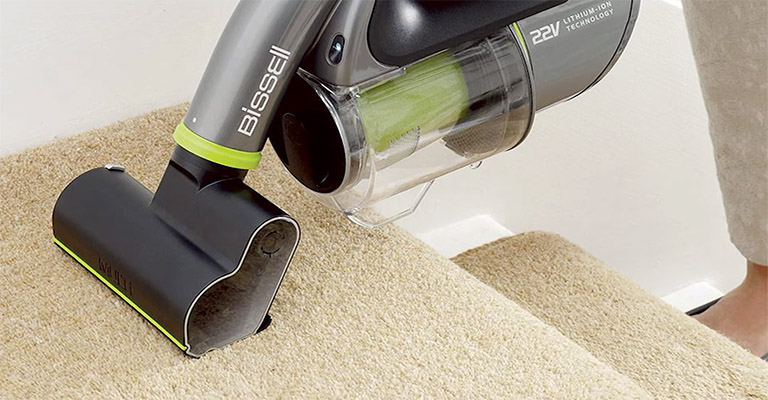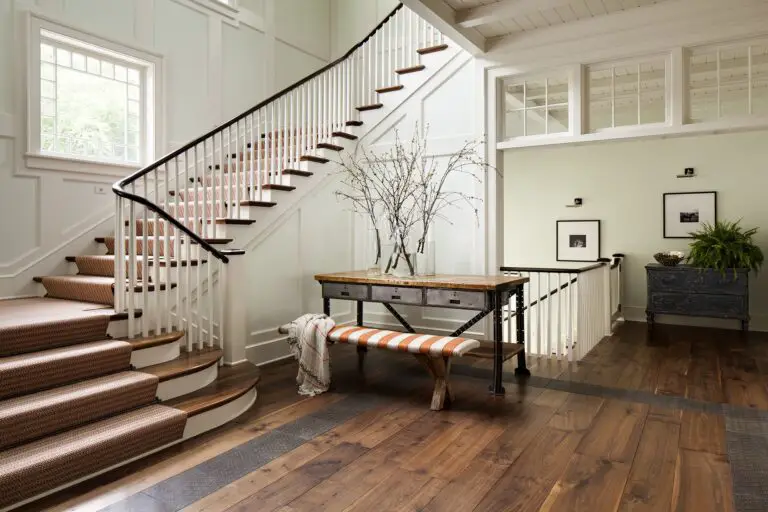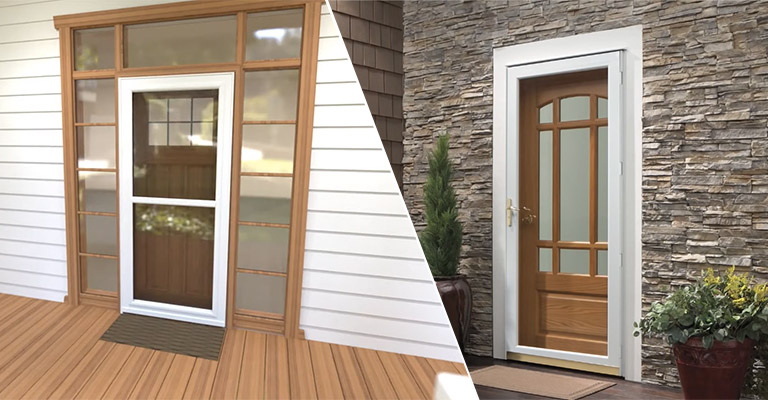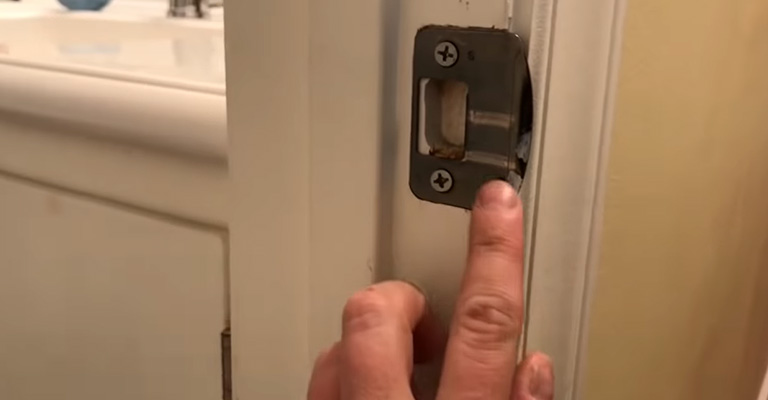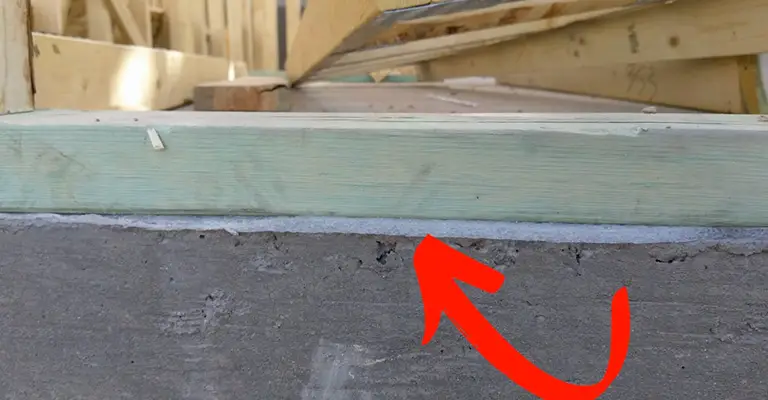Is It Ok To Tile Over Wallpaper?
Usually, when you tile over wallpaper, you need to remove the wallpaper first before tiling. If you can’t remove wallpaper withmmout damaging or destroying it, then there are other options, such as painting or using wallpaper adhesive tape.
Removing wallpaper is easy. Each wall should be sprayed one at a time, waiting a short while between each application. Pull slowly and carefully on one corner of each piece of wallpaper to remove it.
This is very common on DIY shows. In some cases, you can spray fabric softener on top of the wallpaper, and I have even seen some steamers for wallpaper removal. Renting a steamer for wallpaper removal is a good option.
Can You Tile Over Wallpaper?
There are many factors to consider before tiling over wallpaper. One of the most important is whether you can remove the wallpaper without damaging or destroying it.
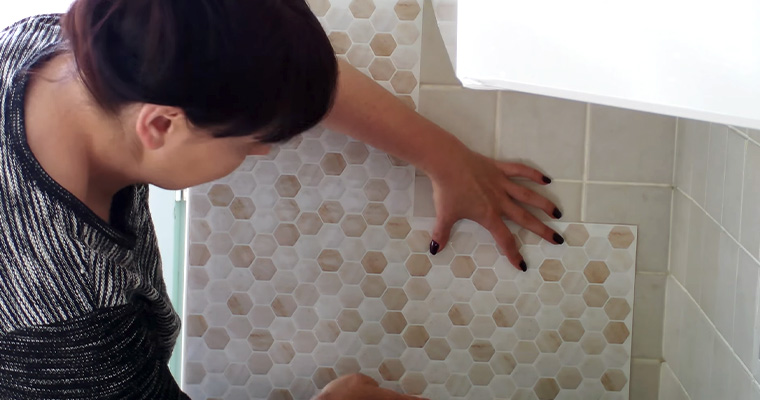
If you can, then there’s a good chance that it will be easier to tile over the wall than if you have to rip up the existing paper and start again. If you can’t remove wallpaper without damaging or destroying it, then there are other options, such as painting or using wallpaper adhesive tape.
Is It A Good Idea To Tile Over Wallpaper?
When it’s time for a change and the wallpaper has to be removed, wallpaper can add drama and flair in ways few other decorating techniques do. It’s tempting to take the easy way out when dealing with potentially heavy, costly products like tile, but that’s not necessarily a good idea.
There is a consensus from home decorating companies and tile companies that you shouldn’t tile over wallpaper. A not-removed wallpaper can crumble and deteriorate, causing damage to the tile adhesion and cracks in the future.
Taking shortcuts to prepare a surface where you’re tiling over wallpaper is problematic because you’re risking your expensive tiling job. It’s best to remove the wallpaper first if you plan on keeping the tile up for the long haul.
A home with multiple layers of wallpaper is most likely to experience this problem. Therefore, whenever tiling over plaster means stripping wallpaper, there’s a judgment call when it comes to whether to strip the wallpaper.
A Guide To Tiling Over Wallpaper
It is possible to apply peel-and-stick tiles over wallpaper without much preparation – follow the product’s instructions.
It is important to note that steam in bathrooms or kitchens can loosen this over time. Plus, they can appear cheap, leading to questions from prospective buyers or tenants, whether you’re cutting corners somewhere else.
Getting A Wall Ready For Tiling
Although the overwhelming consensus says tiling over wallpaper isn’t a good idea, that doesn’t mean you can’t. You can give it a try as long as you’re committed. The key is to remove as much wallpaper as possible.
You might not be able to clean up the stuff you can’t get off, but it might stick around for quite a while. Depending on how permanent you think the wallpaper is, some old wallpaper may never come off. Use your judgment.
The easiest way to remove wallpaper is to scuff the surface until the protective finish is penetrated. Steamers are popular, but some experts say they can force steam deeper into the drywall than a damp cloth can.
This can result in drywall adhesion issues and drywall falling off. Scrape away the wallpaper to the best of your ability. Once the wallpaper has been removed mostly, wash the walls with TSP and allow them to dry thoroughly.
Afterward, that smooth surface should be filled or spackled and allowed to dry, then sanded, vacuumed, and wiped clean, then allowed to dry again. Then prime the wall so that mortar adheres to it.
How To Remove Stubborn Wallpaper?
It is refreshing to have wallpapers as an alternative to painting to create a new feel or to enhance your home decor. With so many types of wallpaper available in the market, there is also a downside that might require you to part with some money to fix your walls.
Although some wallpapers may come off, they always leave an ugly mark on the wall since they come off easily with the paint. However, if you’re worried about your budget, there are several wallpaper removers you can choose from, such as the Wagner Steam Cleaner. It uses natural steam to clean without chemicals.
In order to remove old wallpaper, the machine has been fitted with a wallpaper removing attachment that uses steam to do the job. In addition to cleaning your countertops, showers, and sinks, the machine is also an excellent surface cleaner.
Removing Adhesives
You may even find that you have spots or a full coat of wallpaper adhesive on the wall after all of the paper is removed. Solvents should loosen this adhesive as well. Once it is loose, you can use a putty knife to scrape it off. To prevent gouging of the supporting wall, be sure only to use the flat edge of the putty knife.
You should not over-saturate the wall with water if you are applying wallpaper over drywall, and so use as little solvent and water to remove all adhesive as possible. The wall should then be cleaned; then the walls should be filled in with filler putty before installing tile.
Wallpaper Covering
If you install tile over a previously wallpapered wall, your final option is to cover the old wallpaper completely. Most people opt for cement backer boards for this application.
A ceramic tile installation with a mortar adhesive can be achieved with this product, which resembles drywall except that it’s waterproof. You can then install ceramic tile directly to this surface after attaching the sheets of this material to the wall studs to cover the wallpaper.
Laying Tile On The Wall
Following the preparation of the wall, tile it according to the manufacturer’s recommendations. The first step is to plan your pattern and build a visual guide for laying them out straight and consistently.
In the next step, you’ll mix a thin-set mortar to a creamy peanut butter consistency, which you’ll spread with a notched trowel in thin layers.
Then it’s time to lay down the tiles, ensuring that you have a proper grout channel while maintaining straight tiles.
The grout can be applied in small sections after it has dried for 24 hours. Sanded grout should never be used with glass, metal, or polished marble tiles. Wipe the grout with a warm, damp sponge after it has dried for 10 minutes.
The grout needs to be cleaned thoroughly once it has dried. First, use a product that removes grout haze. Then you will need to seal the grout and use silicone sealant in the corners a few days later.
The best way to tile over wallpaper is by using a thin-set mortar. This is a thin layer of cement that can be applied on top of the wallpaper before grouting occurs. It will help keep your tiles in place and minimize any gaps between them.
If you tile over wallpaper, you should know that it is hard to remove tile if you have to remove tiles.
Final Words
When it comes to tiling over wallpaper, the answer is no. Over the area you want to tile, you can just screw the thin backer board into the wall and then tile over it.
The only type of wallpaper that tolerates moisture is vinyl-backed wallpaper. Otherwise, the tiles are at risk of falling off. Taking the paper out of the wall is simpler if you are tiling over it.

